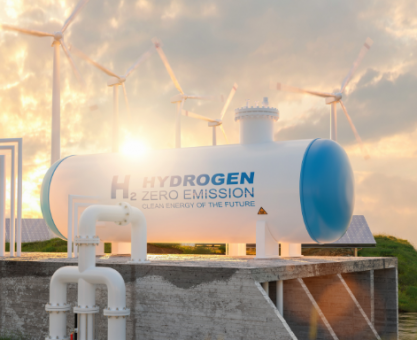Executive Summary
-
Regulatory changes are catalyzing significant shifts in industrial decarbonization.
-
New policies are fostering innovation and investment in green technologies.
-
Businesses face challenges in compliance but also opportunities for competitive advantage.
-
Strategic insights and tools are available to aid industries in the transition.
Introduction
The global push towards sustainability has intensified, and industries worldwide are under pressure to reduce their carbon footprints. Regulatory frameworks are evolving rapidly, compelling industries to adapt or risk falling behind. For investors, founders, and corporate leaders, understanding these regulatory shifts is crucial. This article delves into the impact of policy changes on industry decarbonization and offers strategic insights for navigating this transition effectively.
Definitions / Context
Decarbonization refers to the process of reducing carbon dioxide (CO2) emissions associated with industrial activities. Key terms include:
-
Carbon Pricing: A financial cost imposed on carbon emissions to encourage reduction efforts.
-
Emissions Trading System (ETS): A market-based approach to controlling pollution by providing economic incentives for reducing emissions.
-
Net-Zero Targets: Goals set by companies or countries to balance emitted and absorbed CO2, ultimately achieving zero net emissions.
Benefits / Pros
-
Innovation Incentives: Policies encourage R&D in sustainable technologies.
-
Market Opportunities: Access to new markets and customer segments seeking sustainable products.
-
Cost Savings: Long-term reduction in operational costs through energy efficiency.
Risks / Cons / Challenges
-
Compliance Costs: Initial investments in technology and infrastructure can be substantial.
-
Regulatory Complexity: Navigating diverse regulatory landscapes requires expertise.
-
Transition Risks: Industries must manage shifts in supply chains and workforce dynamics.
Step-by-Step Process
How to Comply with New Decarbonization Policies:
-
Assess Current Emissions: Conduct a comprehensive audit of emissions.
-
Set Decarbonization Targets: Align with industry benchmarks and regulatory requirements.
-
Develop a Roadmap: Create a strategic plan outlining steps and timelines.
-
Implement Technology Solutions: Invest in energy-efficient technologies and renewable energy.
-
Monitor and Report: Establish systems for ongoing emissions tracking and reporting.
A leading automotive manufacturer, facing stringent EU emissions targets, adopted a comprehensive decarbonization strategy. By integrating electric vehicles into their lineup and optimizing manufacturing processes, they not only met regulatory requirements but also captured a growing market share of environmentally-conscious consumers.
— European Automotive Industry Leader
Expert Tips / Strategic Insights
-
Engage Stakeholders: Collaborate with government bodies, NGOs, and industry peers.
-
Leverage Incentives: Utilize available subsidies and tax credits for green investments.
-
Continuous Learning: Stay informed about policy changes and emerging technologies.
Tools / Resources / Calculators
-
Carbon Footprint Calculators: Tools to estimate and track emissions.
-
Government Grants Database: Resources for funding opportunities.
-
Sustainability Reporting Standards: Guidelines for transparent reporting.
Conclusion
The shift towards decarbonization is not just a regulatory challenge but an opportunity for industries to innovate and lead in sustainability. By understanding and adapting to policy changes, businesses can secure a competitive edge and contribute to global environmental goals. To navigate these changes effectively, consider engaging with experts for tailored strategic advice.






















